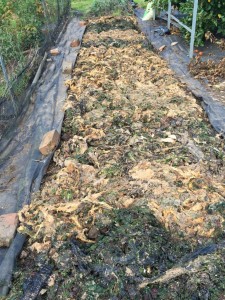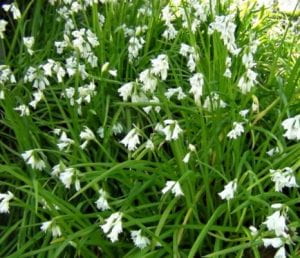 I have lived in my present house for 20 years now. When we first moved in there was a pretty white flower that was tucked around the edges of the garden in shady parts. I left it for about three years until one day I realised that it was all over garden and had spread incredibly. In fact, it was taking over.
I have lived in my present house for 20 years now. When we first moved in there was a pretty white flower that was tucked around the edges of the garden in shady parts. I left it for about three years until one day I realised that it was all over garden and had spread incredibly. In fact, it was taking over.
The plant was Allium triquetrum, also known as Snowbell, three-cornered leek or onion weed. I came to call it something much ruder! It has taken me 15 years to get rid of it and I am now at the point where I might find one or two in planting that I haven’t changed since I moved into the house. Imagine my horror when I discovered that at the bottom end of the wildlife garden (see how I got this here) the two beds are overrun with it. I know it is because the first leaves start to come through in October and continue to about April/May when the plant flowers. I started to dig it up but realised once I had filled three compost bags with the blighters from one small corner that I needed to think about this problem.
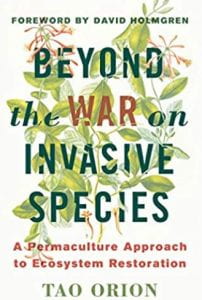 I recently read Beyond the War on Invasive Species: A Permaculture Approach to Ecosystem Regeneration by Tao Orion. It is not a ‘light’ read but the basis of the book is that using multiple applications of weedkiller at regular intervals is surely not the way to remove invasive species and regenerate land. Permaculture offers a different way based on its ethics and principles and we should be taking a slightly longer and more considered view. I don’t know if I would agree if Japanese Knotweed were damaging my house but in this instance, I can afford to take a different view. Tao Orion offers 4 phases to dealing with an invasive species: Turn on the macroscope, complete a site assessment, make a plan and then implement it.
I recently read Beyond the War on Invasive Species: A Permaculture Approach to Ecosystem Regeneration by Tao Orion. It is not a ‘light’ read but the basis of the book is that using multiple applications of weedkiller at regular intervals is surely not the way to remove invasive species and regenerate land. Permaculture offers a different way based on its ethics and principles and we should be taking a slightly longer and more considered view. I don’t know if I would agree if Japanese Knotweed were damaging my house but in this instance, I can afford to take a different view. Tao Orion offers 4 phases to dealing with an invasive species: Turn on the macroscope, complete a site assessment, make a plan and then implement it.
What follows is my plan for dealing with the plant over the next 5 or more years.
Phase 1 – Turn on the macroscope
Here we need to stop looking at the plant and consider the ecosystem it finds its self in and try to develop a deeper understanding of why the plant is there. Orion suggests doing this over the course of a year.
The allium is growing in a couple of beds that contain trees – mostly cherry and hazel but some euonymus, holly, an apple tree and a hawthorn. The cherry trees have suckered because the original ones have been pruned and on a quick count I found 12 suckers in a bed that is probably not much more than 2m by 3m. They are all more than 3m tall.
The bed is in deep shade because of all the trees plus an overgrown hedge about 4m away that has not been cut for 3 or 4 years and is now blocking out the evening sun. Hazels have been planted or suckered around the outside of the bed and clipped to keep them under control. This has caused them to grow like a hedge so the whole area is very enclosed with very little light coming in. When I weeded the bed on a windy day, very little wind came through the bed due to the proliferation of trees so it is not only dark but has very little air movement.
The soil is sandy and very, very dry. There is little humus on the top of the soil – even the ivy is struggling to grow there.
I have now cut the hedge but need to observe the beds over the course of the next year and look at the light and how much rain enters the beds. I have on old rain gauge so I will stick that in the bed in the middle and see how much falls in there. I have another rain gauge which I can put in a different part of the garden that is more open to see how much falls on the plot to compare it with.
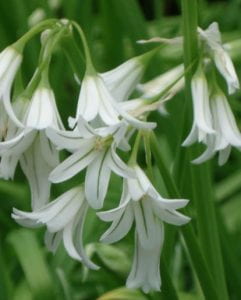 Phase 2 – Site assessment
Phase 2 – Site assessment
This phase demands that we find out about the site in more detail, its geology and history, how the watershed works and take photos of it during different seasons. It is time to study the species and find out more about it and what its function is.
Exmouth is the start of the Jurassic Coast and has the earliest geology of the coast. The cliffs which are about a mile away are from the Triassic Period – 250-200 million years ago. The soil is very stony – often round water-shaped pebbles. During the triassic period the climate was like that of the Sahara Desert today. Seasonal flash floods swept large quantities of sediment into the valleys and the plains fringing the deserts and both the red mudstone and the pebble beds found in east Devon are classic examples of deposition. We don’t have the mudstone but we do have the pebbles.
Jumping forward a lot, the allotment site has been a set of allotments since the first world war and although there is little written about it, prior to that it was part of the land that was agricultural in its use.
Allium triquetrum it a native in the Mediterranean basin – south-west Europe, North western Africa, Madeira and the Canary Islands where it grows in meadows, woodland clearings, riversides and roadside verges. It appears in disturbed forest and shrubland and is an early incomer where land has been sprayed or cleared. It is tolerant of many conditions, including some salt, making it common in coastal areas.
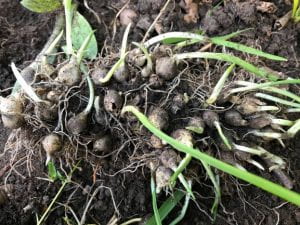 The plant has both male and female parts and so you only need one! The bulbs produced are deposited on the soil where the roots pull them underground, deeper and deeper. The seed can be dispersed by wind and sometimes by ants. I must admit to not having noticed seeds so will look for those next year.
The plant has both male and female parts and so you only need one! The bulbs produced are deposited on the soil where the roots pull them underground, deeper and deeper. The seed can be dispersed by wind and sometimes by ants. I must admit to not having noticed seeds so will look for those next year.
Every part of the plant is edible. The leaves, flowers and bulbs and can be eaten raw or cooked and it is particularly useful because it is just starting to come out (in October) when things like chives and spring onions are finishing.
Phase 3 – Make a plan Year 1
- The edges (of beds) are very important in permaculture. They are the space where two elements come together – the very shady, dry bed of trees and the lighter, damper path. It is often here where invasive species settle and there are certainly more of the allium around the edges of the bed. So, first thing I will do is create a buffer all around the beds by hand weeding these edges about 50 cm into the bed. Later in the year, I will cut all the flowers off the rest of the plants that are left.
- Plant other things around the edge of the bed that will tolerate the conditions. I need to investigate plants that will do well here but those that I have some experience of growing in dry shade are Libertia Grandiflora, Liriope muscari, hellebores, cyclamen, ferns and epimediums. These would also increase the diversity of plants on the site.
- The rest of the alliums I will leave and observe closely across the year to see what they do, how much there is and where they appear most. I will photograph these and make notes at least once a month to build up a knowledge bank about the plant.
- If I were inclined, I would start to eat the things but I am not! However, for those who like to forage for their foods, this is a real possibility. I also saw some for sale for 4 euros so if I were an entrepreneur, I would dig them up and start to sell them. Again, I am not.
- Thin out the cherries, removing the suckering ones to let in more light and prune the cherries that are left. This should let in more light and possibly rain.
- Investigate why there appears to be no humus on the bed. Find out what happens when leaves fall. Where do they end up? Why does there appear to be no humus on a bed under trees?
- With knowledge gained from 2021 observations, plan the next year’s work with the plant.
Have you ever had to deal with this plant or another invasive species? How did you do it?
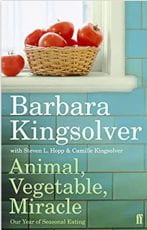
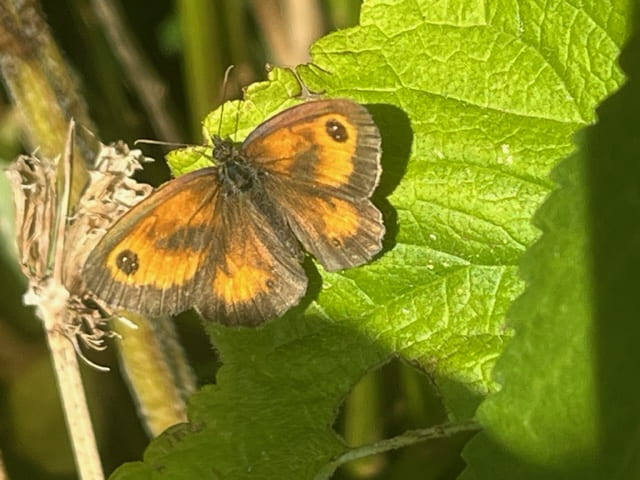
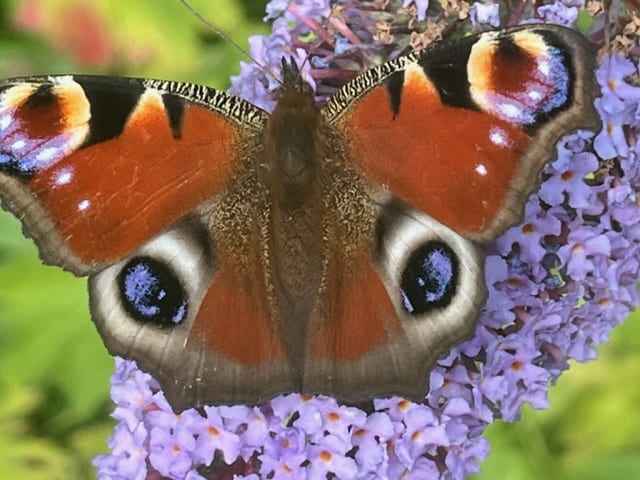
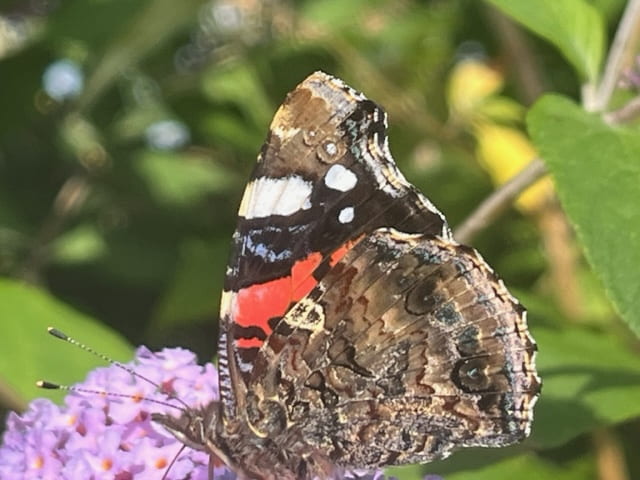
 I have lived in my present house for 20 years now. When we first moved in there was a pretty white flower that was tucked around the edges of the garden in shady parts. I left it for about three years until one day I realised that it was all over garden and had spread incredibly. In fact, it was taking over.
I have lived in my present house for 20 years now. When we first moved in there was a pretty white flower that was tucked around the edges of the garden in shady parts. I left it for about three years until one day I realised that it was all over garden and had spread incredibly. In fact, it was taking over. I recently read
I recently read  Phase 2 – Site assessment
Phase 2 – Site assessment The plant has both male and female parts and so you only need one! The bulbs produced are deposited on the soil where the roots pull them underground, deeper and deeper. The seed can be dispersed by wind and sometimes by ants. I must admit to not having noticed seeds so will look for those next year.
The plant has both male and female parts and so you only need one! The bulbs produced are deposited on the soil where the roots pull them underground, deeper and deeper. The seed can be dispersed by wind and sometimes by ants. I must admit to not having noticed seeds so will look for those next year.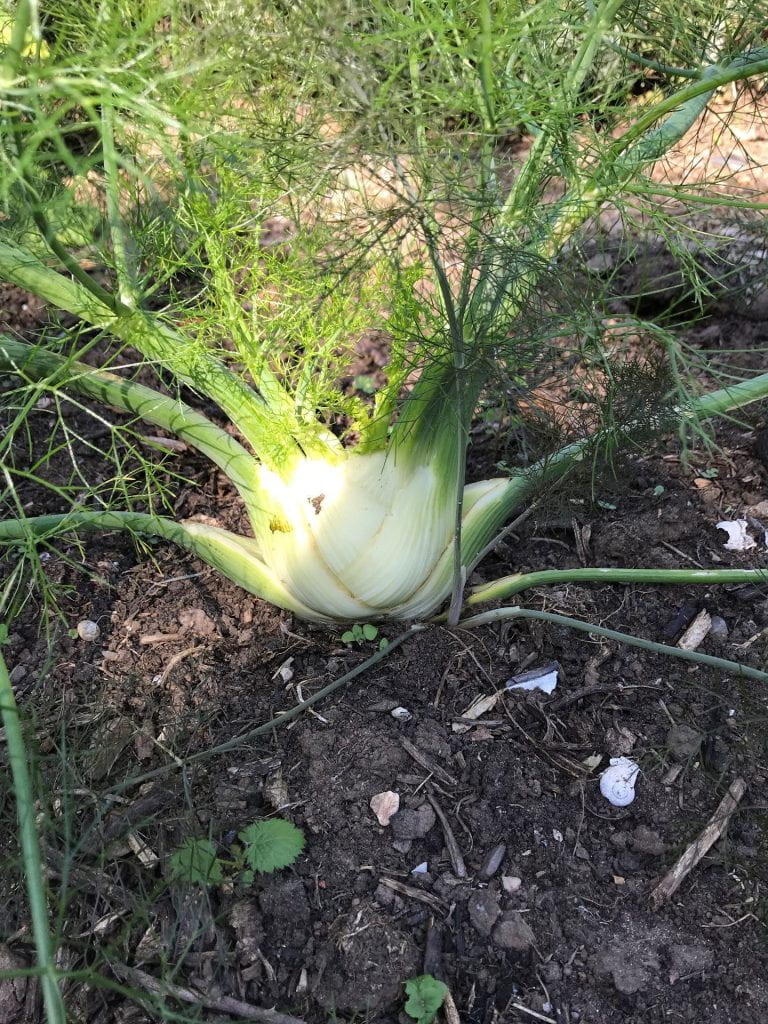 As Rondo matures, it tends to get wider and wider, becoming like its name suggests rounder. The scales (I’m not quite sure what you all each overlap of fennel) get thicker and are quite juicy when eaten raw or cooked.
As Rondo matures, it tends to get wider and wider, becoming like its name suggests rounder. The scales (I’m not quite sure what you all each overlap of fennel) get thicker and are quite juicy when eaten raw or cooked.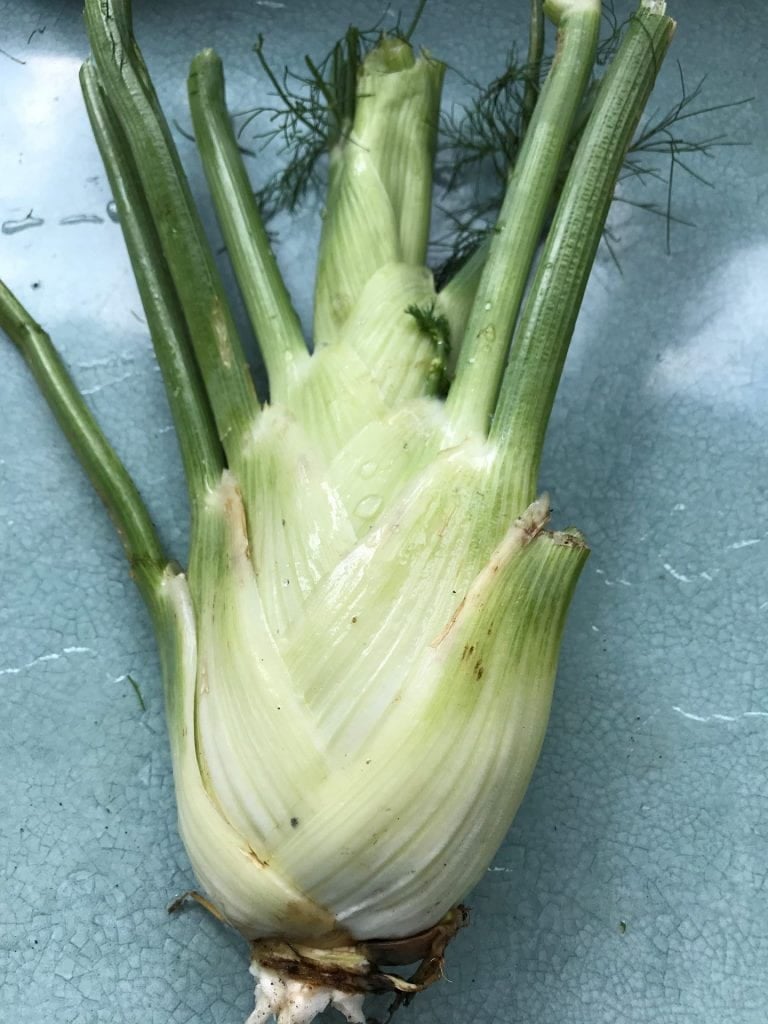 Doux de Florence seems to get taller as it matures and bolted. Maybe I should have eaten this type of fennel when it was younger and smaller. The bulbs that were left all bolted at the same time which means we need to eat quite a bit of fennel NOW!
Doux de Florence seems to get taller as it matures and bolted. Maybe I should have eaten this type of fennel when it was younger and smaller. The bulbs that were left all bolted at the same time which means we need to eat quite a bit of fennel NOW!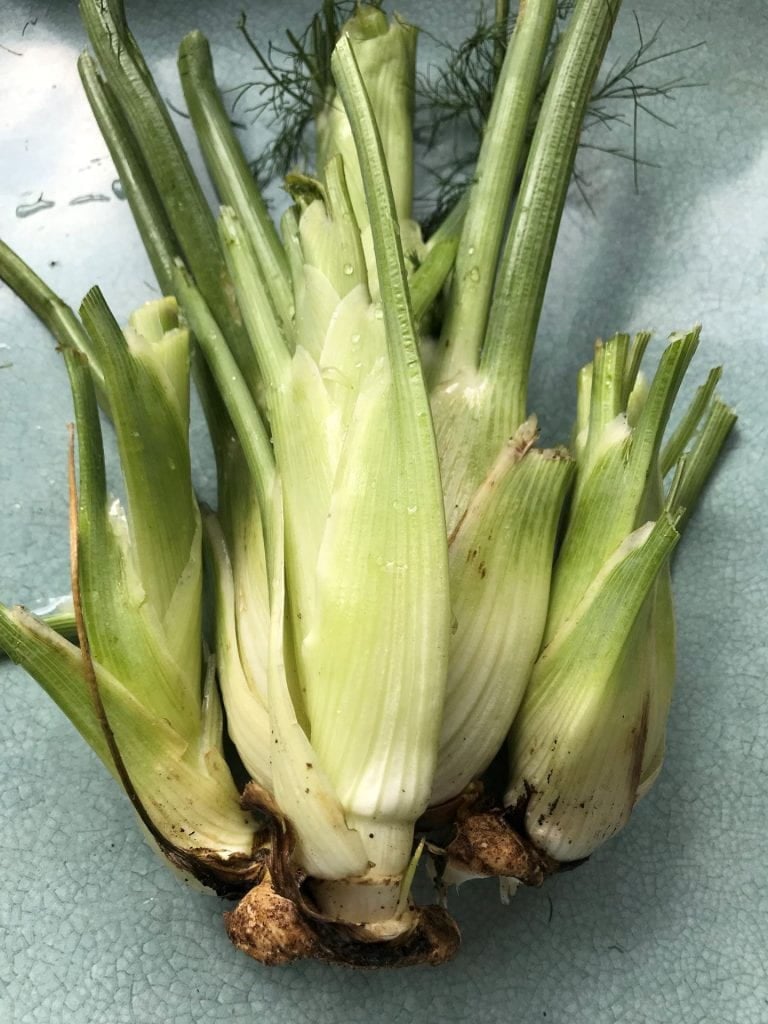
 I don’t usually grow tomatoes outdoors because of blight. I grow them in the polytunnel but this year, I put four plants an a small patch of land behind the green house as I thought this would protect them a little bit. They have grown into large plants with a few tomatoes – something to do with the compost I put on the ground before planting. The best have been Sungold, probably as they are small and much more likely to ripen. I’ll repeat this next year but only with cherry type tomatoes.
I don’t usually grow tomatoes outdoors because of blight. I grow them in the polytunnel but this year, I put four plants an a small patch of land behind the green house as I thought this would protect them a little bit. They have grown into large plants with a few tomatoes – something to do with the compost I put on the ground before planting. The best have been Sungold, probably as they are small and much more likely to ripen. I’ll repeat this next year but only with cherry type tomatoes.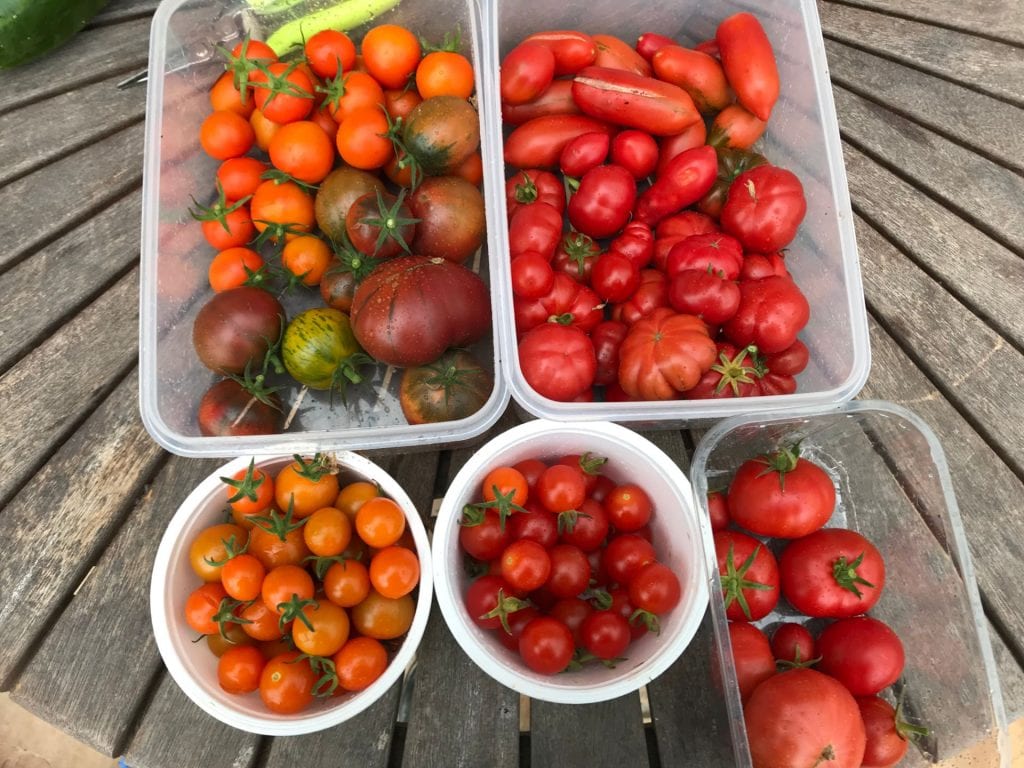 I haven’t watered these since the beginning of September in order to prevent splitting which always seems to happen at this time of year. The plants have done remarkably well, a little droopy on some of the hotter days but recovered overnight. It does make me wonder if I need to water them as much as I do during the hotter months.
I haven’t watered these since the beginning of September in order to prevent splitting which always seems to happen at this time of year. The plants have done remarkably well, a little droopy on some of the hotter days but recovered overnight. It does make me wonder if I need to water them as much as I do during the hotter months.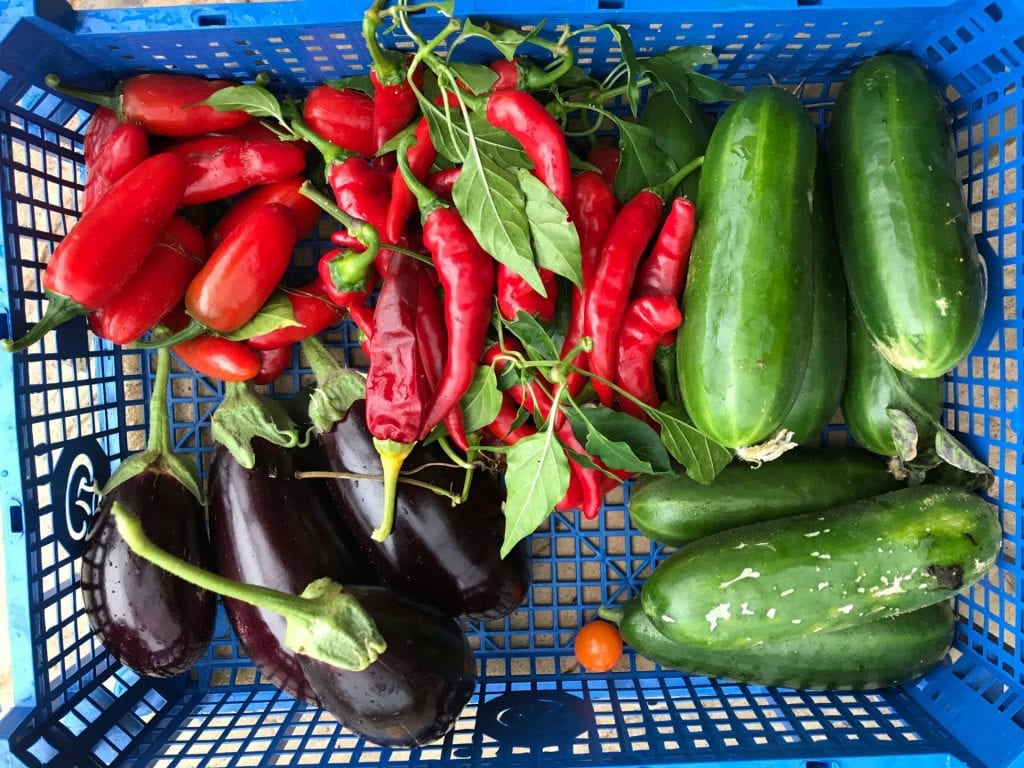

 The squash haven’t done too badly considering the weather. The green ones are Crown Prince which are my all time favourite but we eat last because they keep better than the butternut squash. The orangy ones are Hunter which have been developed for the UK and the yellowy ones behind the Crown Prince are Waltham. They are not quite ripe but will not ripen any more on the plant so I have picked them. These should last us until next spring.
The squash haven’t done too badly considering the weather. The green ones are Crown Prince which are my all time favourite but we eat last because they keep better than the butternut squash. The orangy ones are Hunter which have been developed for the UK and the yellowy ones behind the Crown Prince are Waltham. They are not quite ripe but will not ripen any more on the plant so I have picked them. These should last us until next spring.
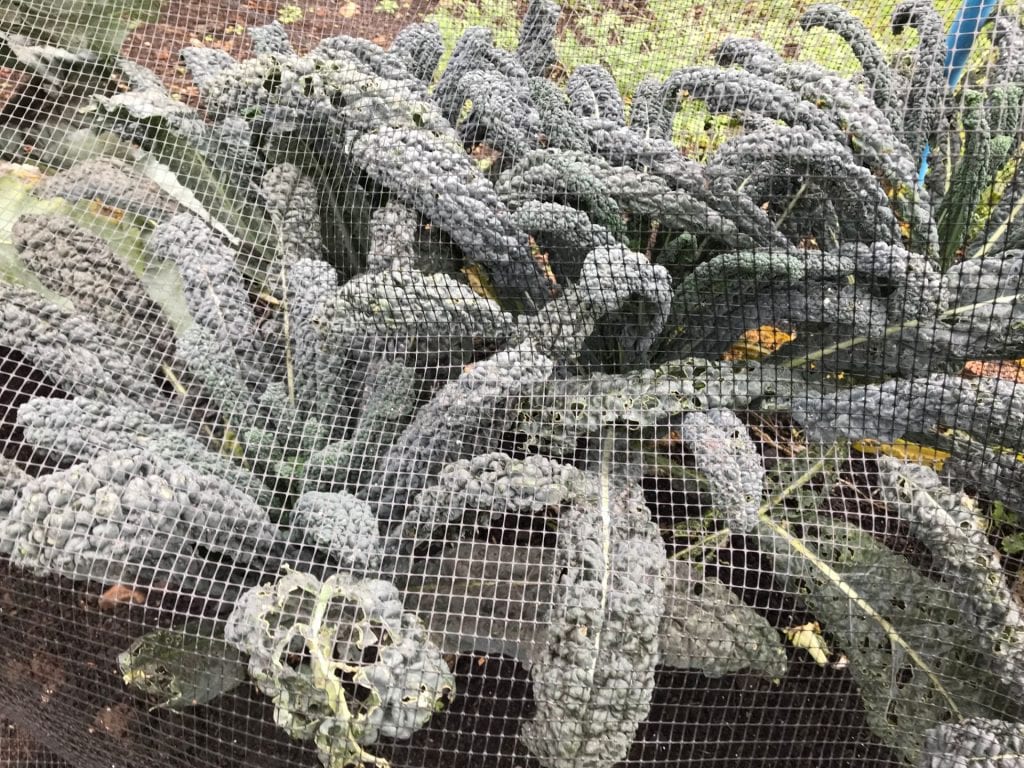
 It has been a fantastic year for tomatoes. We have had kilos of them and they are still going strong although they have slowed down a little as the weather is slightly cooler. The new tomatoes I grew this year have been a mixed bunch and the only one I will keep is Rosella – the small dark red tomato at the bottom of the picture on the left-hand side. It is sharp but sweet which is just how I like my tomatoes. I won’t grow Yellow Pear and Zlatava (large orange one at the bottom) again.
It has been a fantastic year for tomatoes. We have had kilos of them and they are still going strong although they have slowed down a little as the weather is slightly cooler. The new tomatoes I grew this year have been a mixed bunch and the only one I will keep is Rosella – the small dark red tomato at the bottom of the picture on the left-hand side. It is sharp but sweet which is just how I like my tomatoes. I won’t grow Yellow Pear and Zlatava (large orange one at the bottom) again. May bunch were covered in black fly and never recovered. The June batch produced beans but were not prolific. The July batch have been very prolific. They obviously did not like the early heat and I probably didn’t water them quite enough at the right time. The photos are the May and July sowings and you can see why the last lot are more prolific..
May bunch were covered in black fly and never recovered. The June batch produced beans but were not prolific. The July batch have been very prolific. They obviously did not like the early heat and I probably didn’t water them quite enough at the right time. The photos are the May and July sowings and you can see why the last lot are more prolific..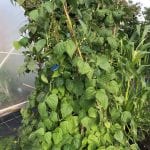 and purple and taste fine. We ate them in a pasta dish with broccoli, artichokes and home made pesto.
and purple and taste fine. We ate them in a pasta dish with broccoli, artichokes and home made pesto.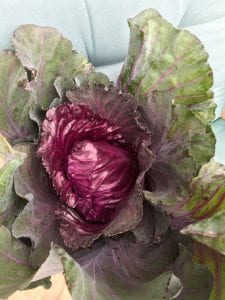
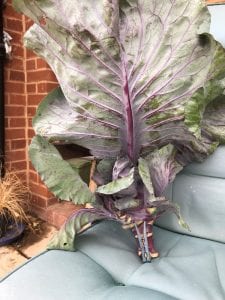 The cabbage is a pointed type, Kalibos, and is good in salads but this one is quite large – over 2.5kgs – so that will be many salads. The only thing I could find to show the scale when I took a picture was a peg which is at the bottom of the stalk on the chair.
The cabbage is a pointed type, Kalibos, and is good in salads but this one is quite large – over 2.5kgs – so that will be many salads. The only thing I could find to show the scale when I took a picture was a peg which is at the bottom of the stalk on the chair.
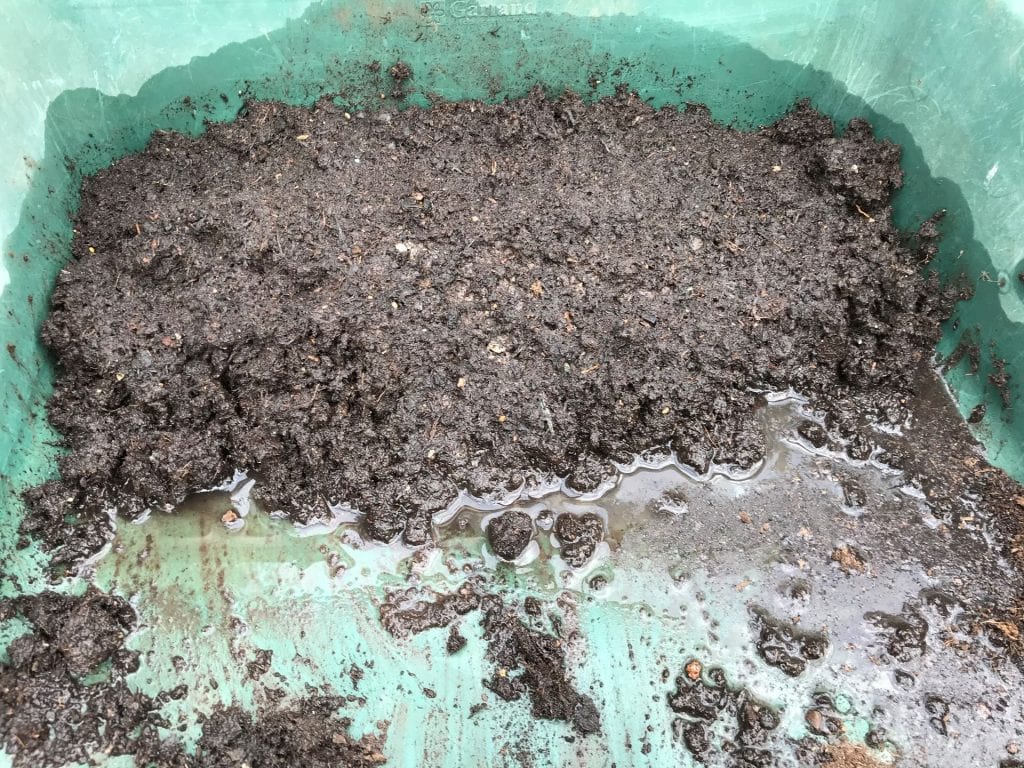
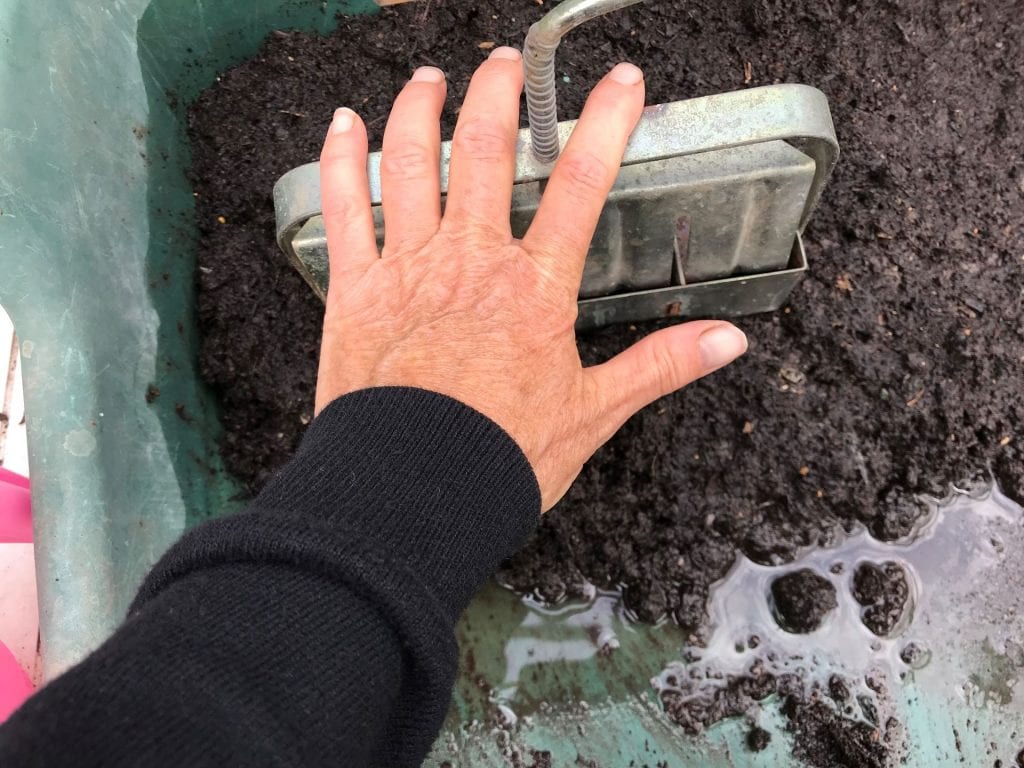
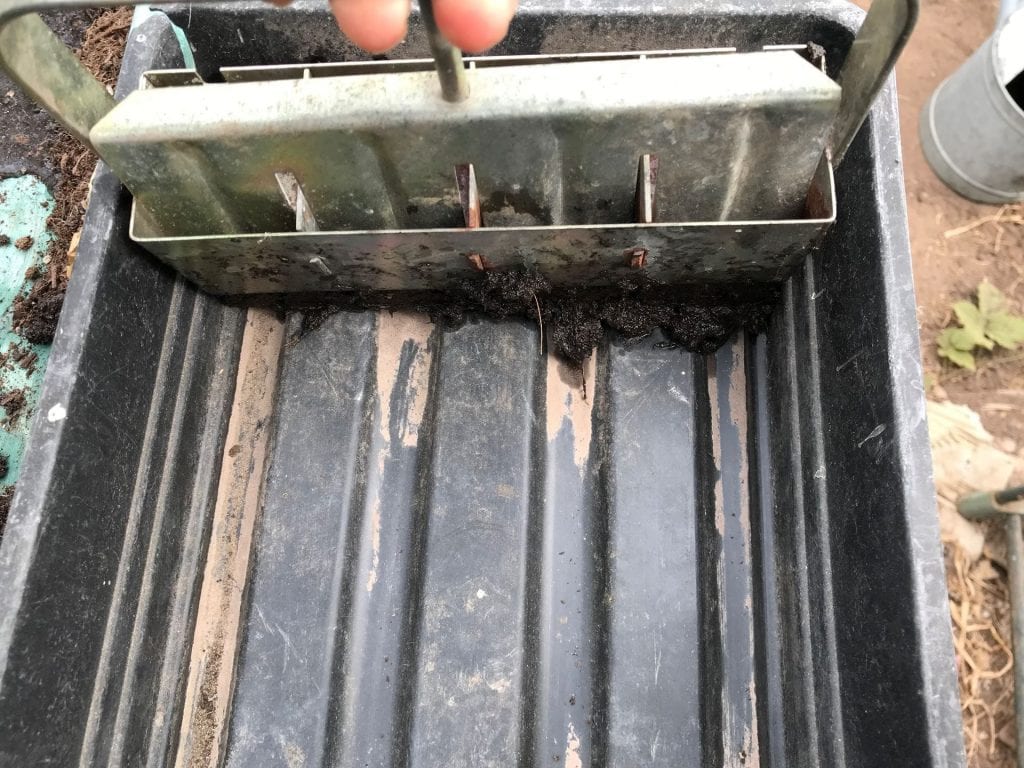
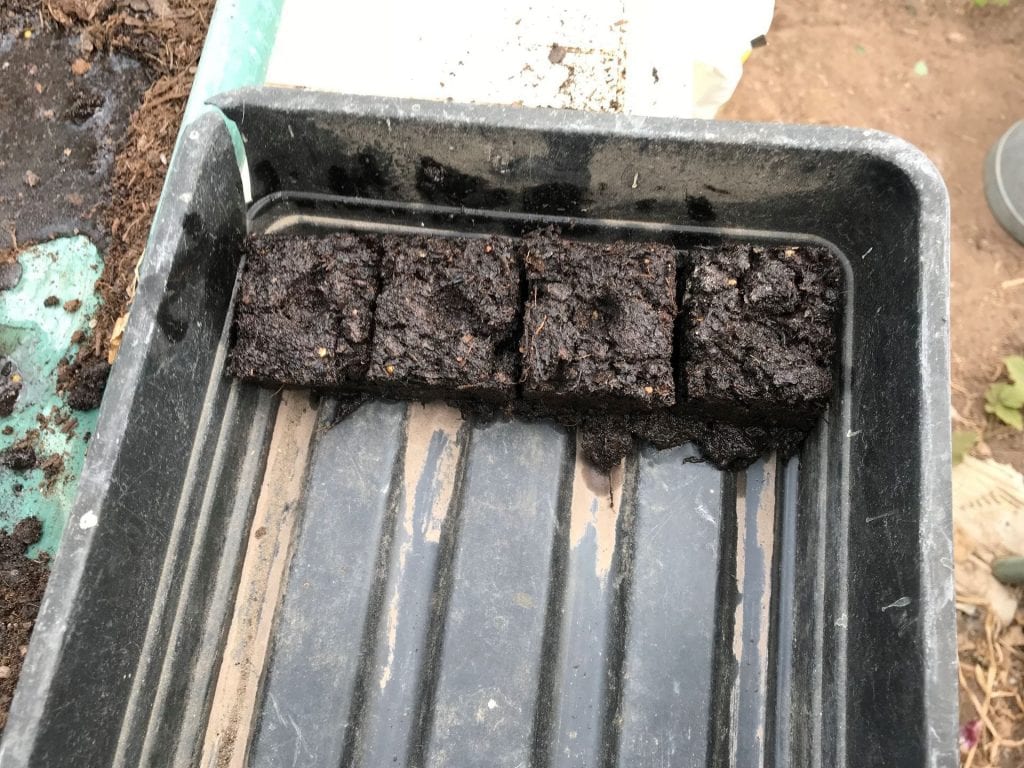
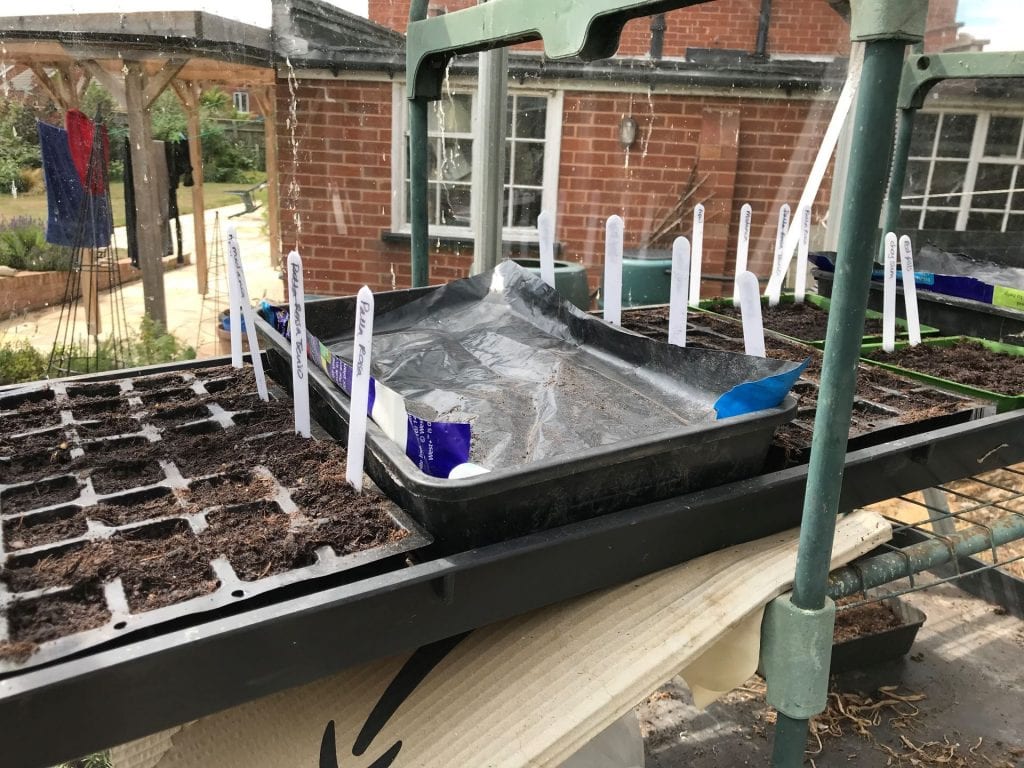

 First, the rhubarb. It is enormous probably due to all the rain we have had. And then there are the radishes. These grew whilst we were away and are now ready to eat. Delicious.
First, the rhubarb. It is enormous probably due to all the rain we have had. And then there are the radishes. These grew whilst we were away and are now ready to eat. Delicious.
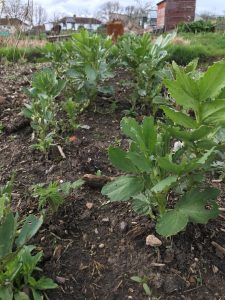

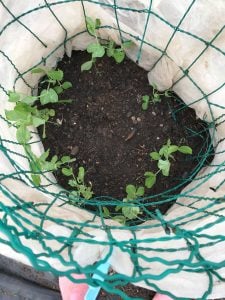

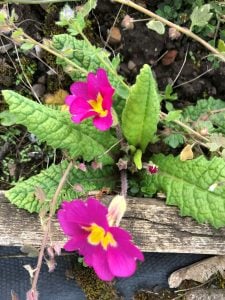 The Wildlife allotment is next to one of mine so I do get many visiting plants. This year the forget-me-nots and primroses are prolific and I have left some to flower. They do brighten the plot up at this time of year.
The Wildlife allotment is next to one of mine so I do get many visiting plants. This year the forget-me-nots and primroses are prolific and I have left some to flower. They do brighten the plot up at this time of year.
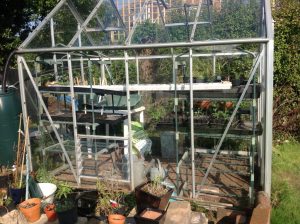
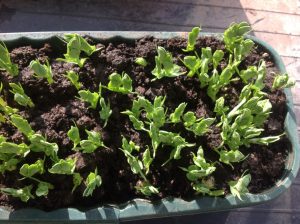
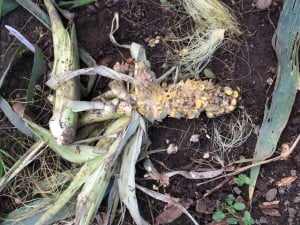 The weather has been warm, if a little windy, so time on the plots has been pleasant. Last week the Badgers beat me to the final cobs of corn. We had eaten most of the primary cobs, only the secondary ones were left, but next year I am going to grow them in the fruit cage! They cause havoc by knocking the plants down and then chewing the cobs. In fact the first year they did this, I thought we had been visited by vandals but an older, wiser person on the plots put me straight.
The weather has been warm, if a little windy, so time on the plots has been pleasant. Last week the Badgers beat me to the final cobs of corn. We had eaten most of the primary cobs, only the secondary ones were left, but next year I am going to grow them in the fruit cage! They cause havoc by knocking the plants down and then chewing the cobs. In fact the first year they did this, I thought we had been visited by vandals but an older, wiser person on the plots put me straight.